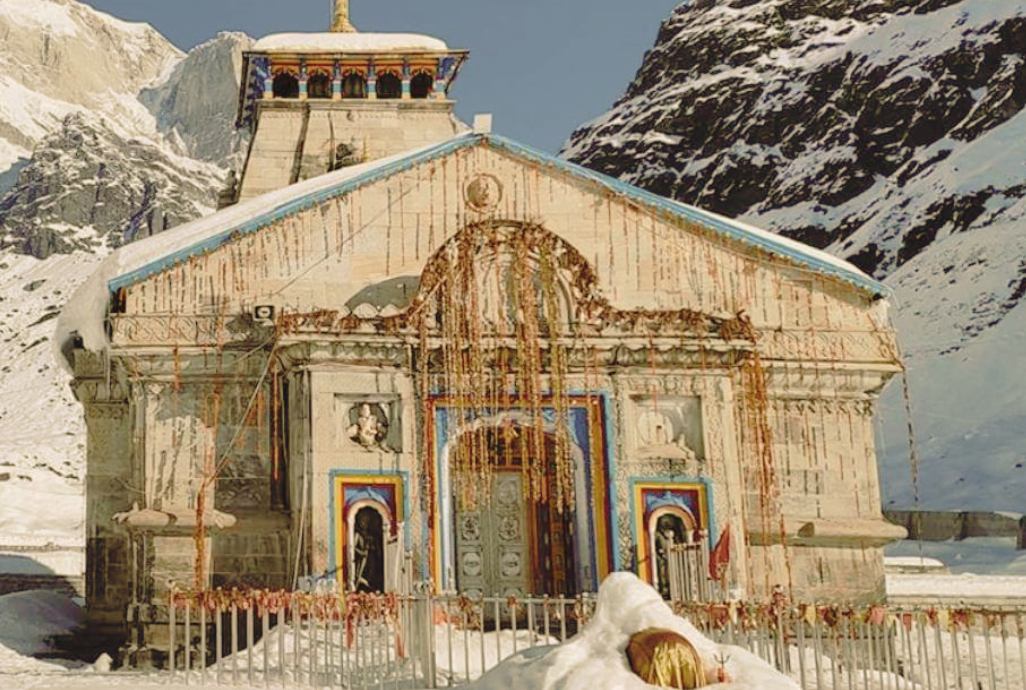Kedarnath is one of the most revered pilgrimage centers in India, located in the state of Uttarakhand. Here’s a detailed overview:
Historical and Religious Significance
- Location: Kedarnath is situated in the Rudraprayag district of Uttarakhand, at an altitude of 3,583 meters (11,755 feet) above sea level in the Garhwal Himalayan range near the Mandakini River.
- Temple: The Pandavas originally built the Kedarnath Temple, which is dedicated to Lord Shiva and is one of the twelve Jyotirlingas, considered the holiest shrines of Shiva. Adi Shankaracharya established the current structure in the 8th century CE.
- Mythology: According to Hindu mythology, after the Kurukshetra war, the Pandavas sought Lord Shiva to absolve them of the sins of killing their kin. Shiva eluded them and took refuge at Kedarnath in the form of a bull. When the Pandavas tried to hold him, he dived into the ground, leaving his hump on the surface. Other parts of his body appeared at different places, which are now revered as Panch Kedar (five sacred shrines of Shiva).
The Pilgrimage
- Chota Char Dham: Kedarnath is part of the Chota Char Dham pilgrimage circuit, which also includes Badrinath, Gangotri, and Yamunotri.
- Accessibility:
- By Road: The journey to Kedarnath typically starts from Haridwar or Rishikesh. Pilgrims travel by road to Gaurikund, which is the last motorable point.
- By Foot: From Gaurikund, there is a steep trek of about 16 kilometers (10 miles) to Kedarnath Temple. Ponies and palanquins are available for those who find the trek challenging.
- By Helicopter: Helicopter services are also available from various locations like Phata, Guptkashi, and Dehradun, providing an alternative for those who cannot undertake the trek.
- Best Time to Visit: The temple is open to pilgrims from April/May (Akshaya Tritiya) to November (Kartik Purnima, the autumn full moon), as the region is snowbound during the winter months. The ideal time to visit is during the summer months of May to June and post-monsoon September to October.
Natural Beauty and Challenges
- Scenic Beauty: The trek to Kedarnath offers breathtaking views of snow-capped peaks, alpine meadows, and lush green valleys. The Kedarnath range and the Mandakini River add to the serenity and spiritual ambiance of the place.
- Natural Calamities: The region is prone to natural disasters. The 2013 flash floods in Uttarakhand caused significant devastation, including damage to the Kedarnath Temple and surrounding areas.
Facilities and Accommodation
- Lodging: Accommodation in Kedarnath ranges from basic lodges and guest houses to camps. Gaurikund and other nearby towns offer more comfortable lodging options.
- Food: Simple vegetarian food is available, keeping in line with the religious significance of the place. Langars (community kitchens) provide free meals to pilgrims.
- Medical Facilities: Basic medical facilities are available, but due to the remote location, they are limited. Pilgrims are advised to carry necessary medications and be prepared for high-altitude conditions.
- Angkor Wat – The Largest Hindu-Buddhist Temple in the World

- UNESCO World Heritage Sites

- Indian Handicrafts: A Diverse Cultural Heritage

Tips for Pilgrims
- Physical Preparation: Due to the high altitude and the strenuous trek, it’s advisable to be in good physical condition. Regular exercise and stamina-building activities can help.
- Travel Light: Carry essential items like warm clothing, rain gear, sturdy footwear, personal medications, and basic toiletries.
- Stay Informed: Check weather conditions and local advisories before starting the pilgrimage, as the region is prone to sudden weather changes.
Kedarnath is not just a spiritual destination but also a testament to the enduring faith of its pilgrims and the majestic beauty of the Himalayas.



